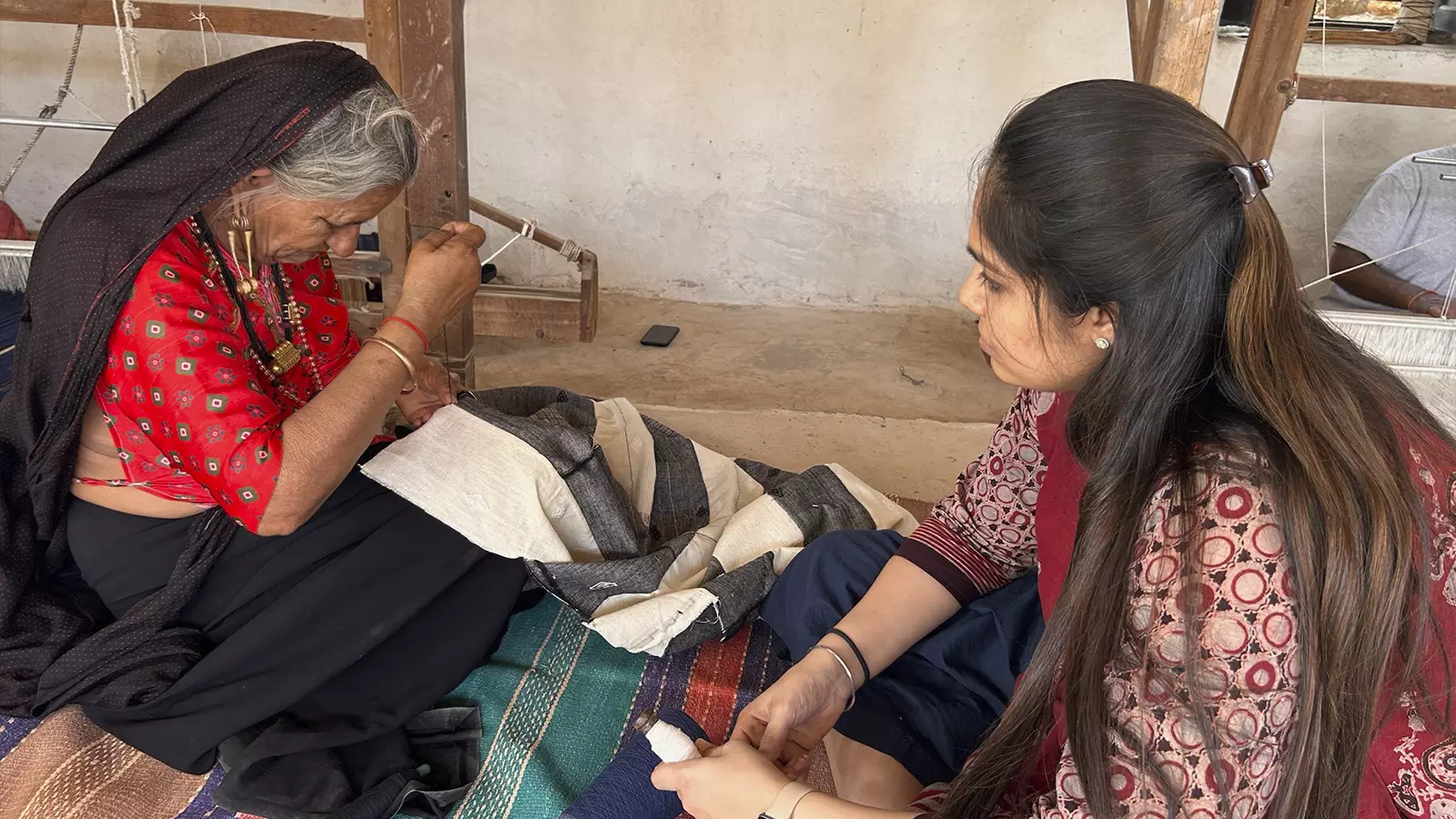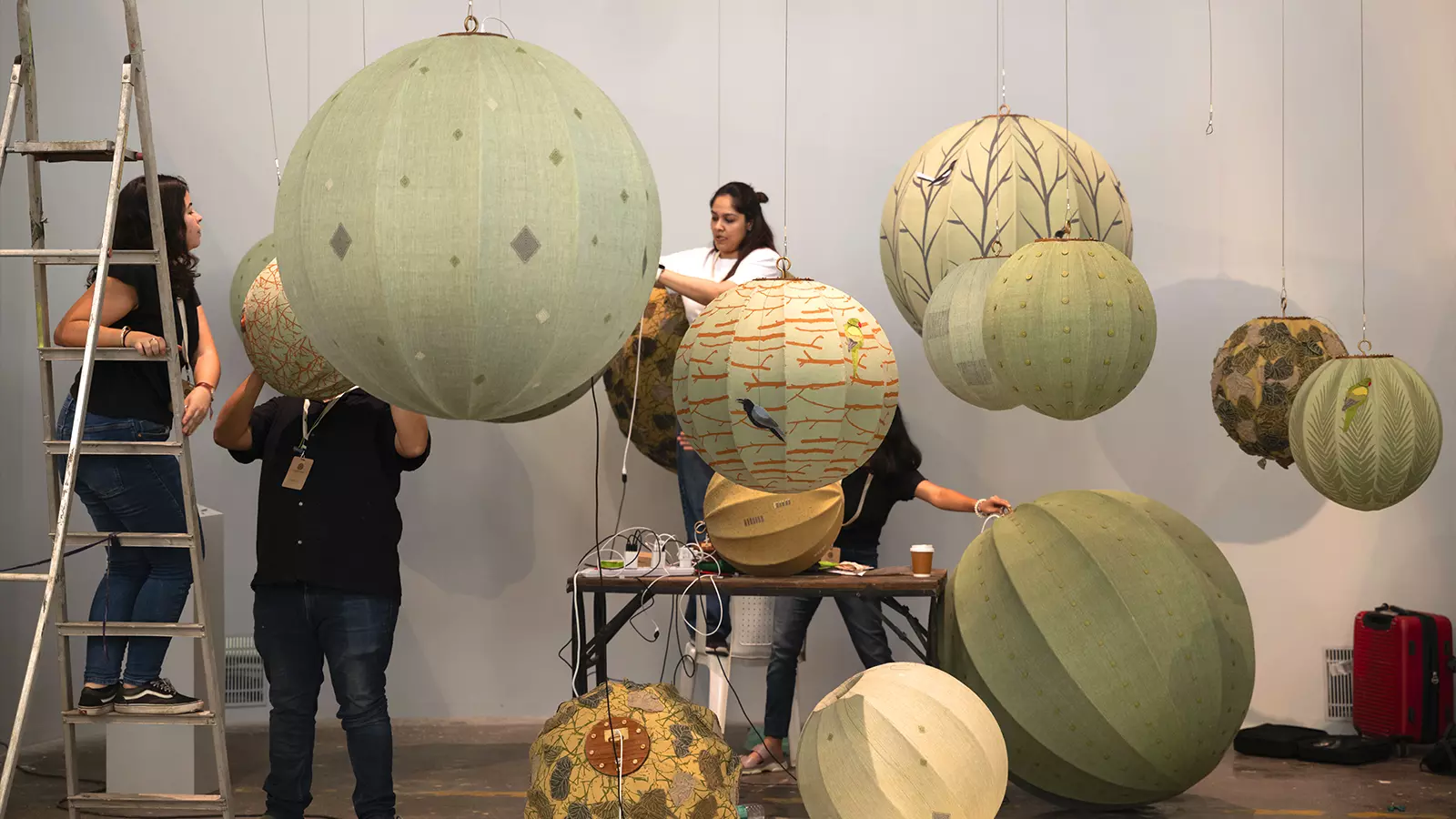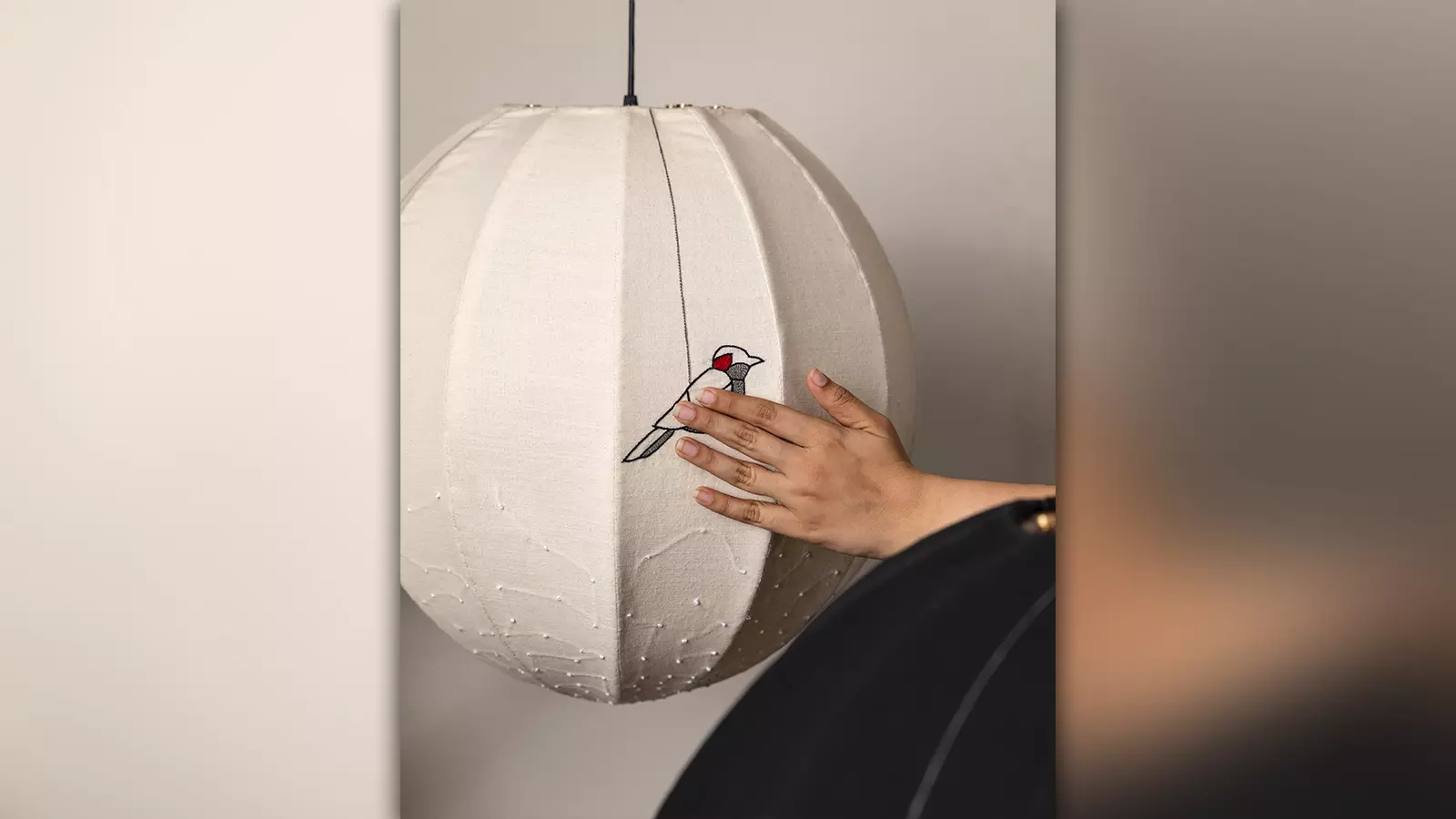
- Home
- India
- World
- Premium
- THE FEDERAL SPECIAL
- Analysis
- States
- Perspective
- Videos
- Sports
- Education
- Entertainment
- Elections
- Features
- Health
- Business
- Series
- In memoriam: Sheikh Mujibur Rahman
- Bishnoi's Men
- NEET TANGLE
- Economy Series
- Earth Day
- Kashmir’s Frozen Turbulence
- India@75
- The legend of Ramjanmabhoomi
- Liberalisation@30
- How to tame a dragon
- Celebrating biodiversity
- Farm Matters
- 50 days of solitude
- Bringing Migrants Home
- Budget 2020
- Jharkhand Votes
- The Federal Investigates
- The Federal Impact
- Vanishing Sand
- Gandhi @ 150
- Andhra Today
- Field report
- Operation Gulmarg
- Pandemic @1 Mn in India
- The Federal Year-End
- The Zero Year
- Science
- Brand studio
- Newsletter
- Elections 2024
- Events
The future of e-textiles: How smart fabrics will change our lives

The concept of smart fabrics, or e-textiles, may sound like something out of a sci-fi movie, but it's rapidly becoming a reality. E-textiles, which integrate digital components directly into the fabric, are poised to revolutionize industries ranging from healthcare and sports to fashion and military applications. According to Grand View Research, the global e-textiles market size was valued...
The concept of smart fabrics, or e-textiles, may sound like something out of a sci-fi movie, but it's rapidly becoming a reality. E-textiles, which integrate digital components directly into the fabric, are poised to revolutionize industries ranging from healthcare and sports to fashion and military applications. According to Grand View Research, the global e-textiles market size was valued at $2.72 billion in 2022 and is expected to grow at a compound annual growth rate (CAGR) of 32.6% from 2023 to 2030. This explosive growth indicates that e-textiles are not just a passing trend—they’re the future of wearable technology.
The science behind e-textiles
At the core of e-textiles are tiny electronic components seamlessly integrated into fabrics. These components include sensors, actuators, microcontrollers, and conductive threads.

The components in smart fabrics include sensors, actuators, microcontrollers, and conductive threads.
Conductive fibers, made from materials like silver or carbon, act as the nervous system of these smart fabrics, transmitting data and power throughout the material. Flexible batteries or energy-harvesting systems, like solar cells, often power these e-textiles, making them both lightweight and functional.
For example, the ‘Smart Shirt’ developed by Hexoskin is embedded with sensors that monitor the wearer’s heart rate, breathing, and movement. This shirt can send real-time health data to a smartphone app, allowing for continuous monitoring without the need for bulky medical equipment. Hexoskin's shirt is just one of many products showcasing the potential of e-textiles to change how we interact with our clothing.
E-textiles in healthcare: A game-changer
The healthcare industry is one of the most promising areas for e-textiles. Imagine a hospital gown that can monitor a patient's vital signs, detect infections, and even administer medication. According to a report by IDTechEx, the market for wearable technology in healthcare is expected to reach $19.7 billion by 2028, with e-textiles playing a significant role.
One groundbreaking development is the creation of ‘smart bandages’ that can monitor wound healing and deliver drugs directly to the site of the injury. Researchers at Tufts University have developed a prototype of such a bandage that uses integrated sensors to monitor pH and temperature, which are key indicators of infection. This kind of technology could significantly reduce the need for frequent doctor visits, allowing for more efficient and effective wound care.
Fashion meets technology: e-textiles in the fashion industry
The fashion industry has always been about pushing boundaries, and e-textiles are no exception. From clothing that changes colour based on the wearer's mood to fabrics that light up or display digital messages, the possibilities are endless. According to a report by Allied Market Research, the global smart clothing market is projected to reach $5.3 billion by 2027, growing at a CAGR of 26.2% from 2020.
“E-textiles are in the developmental stage, but we are already seeing a lot of creativity emerging, especially in India. By integrating 3D printing, nanotechnology, and other cutting-edge techniques, we can create something unique and sustainable. We can use existing styles or clothes and recreate something new using these technologies, which is more sustainable. As a designer, working with e-textiles is challenging because it requires a lot of thought and action to bring the clothes to life,” says celebrity fashion designer Laxmi Krishna.

One fun example is the ‘Lumos’ jacket, which incorporates LED lights into the fabric to create customisable patterns and messages. This jacket not only makes a fashion statement but also enhances safety by making the wearer more visible in low-light conditions. Krishna, who has designed LED-lit garments for many celebrities, especially for performances, adds, "E-textiles can create a sense of excitement and curiosity. The best part for a designer is the marketing potential—this is definitely the future."
Another innovative product is the ‘Wearable Solar’ dress, which can charge your smartphone using solar panels integrated into the fabric. These examples show how e-textiles are blending fashion with functionality in exciting new ways, offering endless possibilities for the future.
E-textiles in sports: enhancing performance and safety
For athletes, every little edge can make a difference, and e-textiles offer a new level of performance optimization. Smart fabrics can monitor an athlete's vitals, provide real-time feedback on their form, and even prevent injuries. The sportswear market is already seeing significant investment in e-textiles, with companies like Under Armour and Nike developing products that incorporate smart technology.
A study by MarketsandMarkets estimates that the smart textiles market in sports and fitness will reach $1.93 billion by 2022. Products like the "Athos" smart compression wear are leading the charge. Athos garments have sensors that monitor muscle activity, heart rate, and breathing patterns, allowing athletes to track their performance and make adjustments in real time. This technology is not just for elite athletes; it’s becoming more accessible to everyday fitness enthusiasts, helping them train smarter and more safely.
Military applications: the next frontier for e-textiles
The military is another sector where e-textiles are set to make a significant impact. Soldiers require gear that is both functional and durable, and smart fabrics offer a new way to enhance their capabilities. E-textiles can be used to create uniforms that change color to blend into different environments, provide real-time health monitoring, and even offer protection against chemical and biological threats.
According to a report by Frost & Sullivan, the global military wearable sensors market is expected to reach $8.42 billion by 2026. One example of e-textiles in the military is the "Smart Soldier" system being developed by the U.S. Army. This system integrates sensors into the uniform to monitor a soldier's health and performance, providing commanders with real-time data to make better decisions on the battlefield. The uniform can also detect injuries and provide immediate medical alerts, potentially saving lives in combat situations.
E-textiles in India: a growing industry
India, known for its rich textile heritage, is also embracing the e-textiles revolution. With the country's strong background in textile manufacturing and a rapidly growing tech sector, India is well-positioned to become a significant player in the global e-textiles market. The Indian government’s push towards innovation in smart textiles is evident through initiatives like the National Technical Textiles Mission, which aims to position India as a global leader in technical textiles, including e-textiles, by 2024.
Chhail Khalsa, founder and creative principal of Anuvad Innovation Studio, is at the forefront of this movement in India. "India is still very young as a market, and a very different one," says Khalsa. "India has a very different strategy when it comes to fabric, which is why I started doing interactive fabric, only to break the ice." Khalsa's journey began in 2013 as a college thesis and transformed into a fully operational studio by 2021. Working with artisans in Kutch, Khalsa integrated electronics with traditional fabrics, creating innovative e-textiles that have gained recognition.
One of Anuvad Innovation Studio’s notable projects is the ‘Conscious Collective’ by Godrej, a significant step for the studio. Khalsa adds, “We started interactive textiles in October 2022 and did the raw collaborative in the same year. Currently, we use sound, capacitive sensing, or touch sensing, and we are working on integrating light with fabric.” Despite the challenges, Khalsa sees massive potential in using e-textiles for people with disabilities, soldiers, and many other sectors.
Indian researchers are also working on creating affordable e-textiles that can monitor health metrics for early detection of diseases. For instance, the Indian Institute of Technology (IIT) Delhi has developed a smart bandage that can monitor the healing process of wounds, which is particularly useful in rural areas with limited access to healthcare facilities.
In the fashion sector, Indian startups are experimenting with smart fabrics that combine traditional craftsmanship with modern technology. For example, brands are exploring the integration of LEDs into sarees and lehengas, creating garments that light up during festive occasions, adding a new dimension to India’s vibrant fashion scene.
“Creating something unique using 3D printing, nanotechnology, and other advanced techniques is more sustainable. We can repurpose existing styles or clothes to create something new, which is better for the environment. The future of fashion is all about sustainability, and e-textiles will play a crucial role in this transformation,” Laxmi Krishna adds.
Moreover, the Indian sports industry is also beginning to adopt e-textiles, particularly in cricket and yoga, two activities deeply rooted in the country’s culture. Smart wearables are being developed to monitor an athlete’s form and provide feedback, helping to improve performance and reduce the risk of injury.
The fun side
Beyond serious applications, e-textiles are also making their way into our daily lives in fun and unexpected ways. Imagine a t-shirt that plays music or a pillow that lights up when you receive a text message. These playful innovations show how e-textiles can add a touch of magic to everyday objects.
For example, CuteCircuit, a London-based fashion house, has created a line of clothing that allows wearers to send messages or display graphics on their clothes using a smartphone app. Their ‘Twirkle’ skirt is embedded with thousands of micro-LEDs that create animated patterns and colors, turning a simple garment into a dynamic piece of wearable art. This kind of technology is not just about making a fashion statement; it’s about creating a new form of self-expression.
Challenges and the road ahead
While the potential of e-textiles is enormous, several challenges need to be addressed before they become mainstream. Durability is a significant concern—can these smart fabrics withstand everyday wear and tear, washing, and stretching? Another challenge is cost. While prices are expected to come down as technology advances, e-textiles are currently more expensive than traditional fabrics, making them less accessible to the average consumer.
There are also questions about privacy and data security. As e-textiles become more advanced, they will collect vast amounts of data about our bodies and behaviors. Ensuring that this data is securely stored and used responsibly will be crucial to gaining consumer trust.

Despite these challenges, the future of e-textiles looks incredibly bright. As technology continues to evolve, we can expect to see e-textiles become a regular part of our wardrobes, homes, and even healthcare routines. Whether it’s a smart shirt that monitors your heart rate, a saree that lights up for Diwali, or a bandage that speeds up healing, the future of e-textiles is sure to bring something for everyone.
